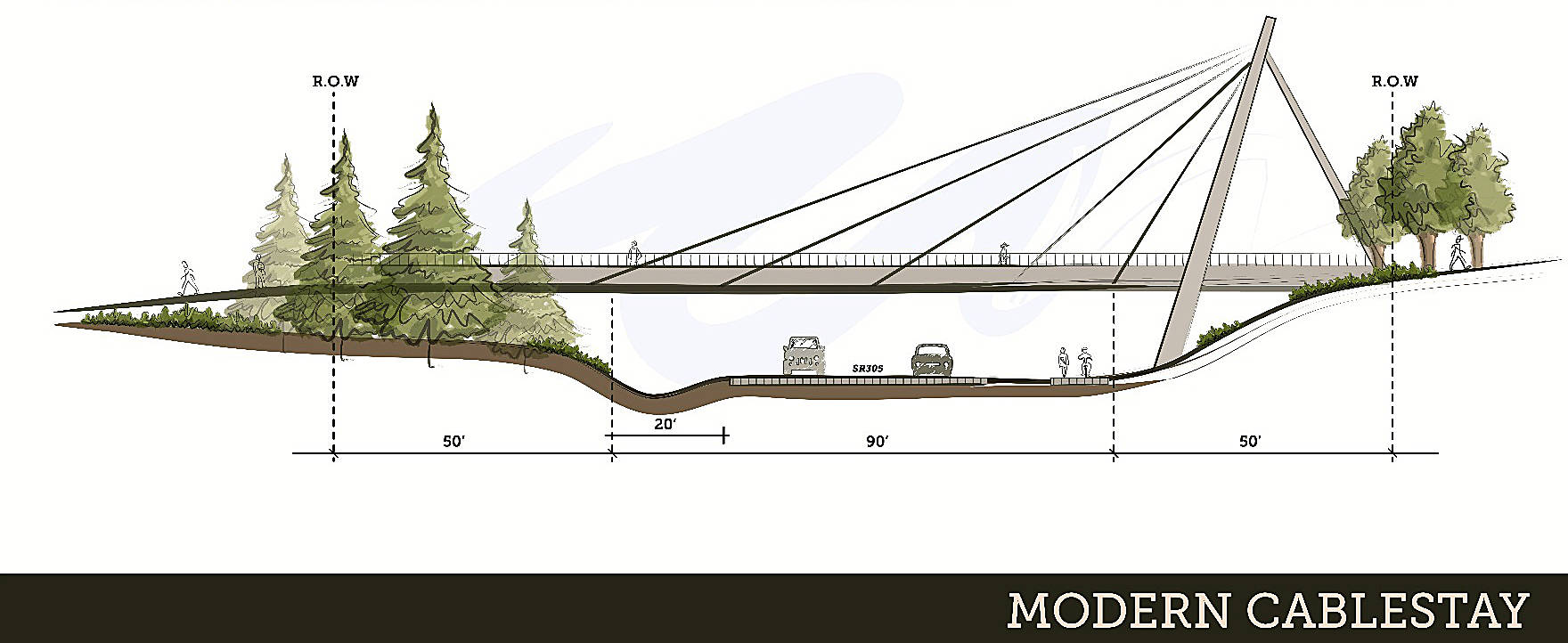The first defeat on Election Night may have come before the last ballots were cast.
Days before, officials at Bainbridge Island City Hall decided to postpone a vote on picking the preferred design for the controversial Highway 305 pedestrian/bicycle bridge until the new city council is seated in January.
That’s a big switch.
Earlier, city officials had planned on a council vote to take place Nov. 14 — after the election, but before as many as three new council members and bridge opponents are sworn in to office.
That plan for mid-November has drawn much criticism in recent weeks, much of it from Councilman Ron Peltier.
Peltier had previously noted that the candidates in two of the three races on this week’s election ballot had said they were opposed to the bridge. And with three on the council already in favor of scrapping the project, the two new incoming votes against the bridge would be enough to flip the previous 4-3 council vote that’s kept the 305 span alive.
Peltier earlier asked his fellow council members to postpone that vote, but with no success. The vote to pick the design for the new bridge has remained on the council’s schedule, and at the council’s last meeting in October, Deputy Mayor Morgan Smith reminded the council that the 305 bridge preferred design was still on the agenda for Nov. 14.
The fight over the bridge isn’t exactly new.
Controversy over the proposed 305 bridge has been raging for months, with many in the community calling for the project to be abandoned.
Money and necessity are two of the biggest reasons. The city was expected to put up $1 million of the $3 million cost of the span, and critics said the money would be better spent elsewhere than for a bridge that would become an unneeded eyesore on the highway. Opponents of the bridge claimed the city was only pushing forward on advanced design work for the bridge in the hope that public opinion would change once more detailed drawings of the span were prepared and presented.
A recent city survey on design options for the bridge, some critics noted, did not contain a “none of the above” option.
The 305 bridge arose as a major issue during campaigns for the city council, and a symbol of a lack of fiscal priorities from city hall. Five of six candidates for council said the project should be stopped.
Councilman Wayne Roth, the only incumbent seeking re-election this year, was repeatedly faulted for his support of the project. (His opponent, Rasham Nassar, is opposed to the bridge.)
Sometime over the past week, however, the city added this note on its website page for the project: “Further discussions on the preferred design option have been postponed until after the first of the year.”
No other public pronouncements have been made.
When contacted by the Review, city spokeswoman Kellie Stickney said she thought the move to delay the vote came via a request from Mayor Val Tollefson.
Peltier said Tuesday he hadn’t heard of the postponement.
“I wasn’t aware that anything got put off ‘til first of the year,” Peltier said in an email.
“If it saves money, that’s great, but I wonder about process. Only the city council, really, should be making those decisions,” he added.
Peltier noted again that the proposed project would face a new council come January.
“Looking at the bigger picture with the bridge, it’s a ‘dead project walking’ and I’m very confident the project will be cancelled at the first council meeting in January for all the reasons you are well aware of. Basically, the bridge would not function as intended: as a functional link to the STO [Sound to Olympic Trail] and a way for bike riders coming off the ferry to travel more efficiently to the south end of the Island. All you have to do is look at the issues related to trying to make the eastern approach work to see the bridge, as envisioned, is not located in a good place for improving connectivity for bikes and pedestrians,” Peltier said.
The city should turn its focus, he said, on roadside improvements that will bring results.
“We need to get on with actually improving safety for non-motorized users, with more bike lanes and shoulders. Everyone, including car drivers will benefit from that.
“The city council also needs to pay closer attention to how capital projects, in general, are conceived and planned,” Peltier added. “I don’t believe in deferring that responsibility to advisory committees, something a number of my colleagues feel we should be doing.”



